A trip to South Africa gives JENNY EVANS a chance to cross an item off her bucket list and experience her first time on safari.
A week ago I was living the thrills of a game drive in South Africa and even now, as I reflect on the experience, it still feels surreal! Going on a safari has always been on my bucket list, but despite having visited 36 countries, Africa always felt like a distant fantasy. Organised by South African Tourism as a familiarisation tour, my adventure took place in the beautiful province of KwaZulu-Natal. We had the opportunity to spend four nights in two different parks.
I must confess that I hadn’t done much research prior to the trip. Until now, my perception of a safari was mainly based on what I had seen in movies. I had always assumed that embarking on a safari meant finding oneself in the heart of an enormous national park, requiring days of travel and possibly landing on some remote airstrip. While there are certainly parks like that, the reserves we visited were surprisingly accessible.
The first reserve we explored was iSimangaliso Wetland Park, located just a three-hour drive from Durban and conveniently close to the town of Saint Lucia. iSimangaliso means “miracle and wonder” in the Zulu language. This exceptional Wetland Park is a designated World Heritage Site, spanning a massive 1.3 million hectares along the KwaZulu-Natal coast. Within its borders, three major lake systems provide a sanctuary for the largest concentration of hippos and crocodiles in South Africa, as well as a haven for 530 different bird species.
Remarkably, the park is state-owned, allowing anyone to visit for a small fee. Upon entering, there is no safety briefing or formal instructions provided. The only warnings I noticed were a few signs indicating the presence of wild animals. It is left to the visitors to assume responsibility for their own safety and behaviour. There is even a picnic area within the reserve. Coming from the “nanny state” of NSW, this lack of strict regulations was quite a surprise! I had always assumed that one could only embark on a safari with a knowledgeable guide in a specialized safari vehicle.
Within minutes of entering the park, we were greeted by the sight of a herd of zebras crossing the road, with a small family of giraffes gathering nearby. Although I had previously seen zebras and giraffes in zoos, witnessing these majestic animals in their natural, untamed environment was truly awe-inspiring.
During our stay, we were accommodated at Makakatana Bay Lodge, the only lodging within the park, which provided the flexibility of early morning and evening game drives while the park was closed to visitors. The luxurious accommodation featured raised cabins connected by a boardwalk. My room had an outdoor bath, and it was the first (and most likely the last) time I have bathed outside while listening to a warthog shuffling underneath my cabin!
In the evening, we gathered around the lit fire pit for a pre-dinner drink before enjoying first-class dining under the stars.
While in iSimangaliso, we went on game drives throughout the park and also travelled by boat through the narrows south of Lake St. Lucia, where we saw hundreds of dozing hippos. During one of the game drives, we spotted my first elephant, a lone bull who didn’t look particularly pleased to see us. He stood in the road in front of us for a few minutes before deciding to wander off. Earlier in the day, he had walked down the main road through the park, knocking over every bollard seemingly on purpose!
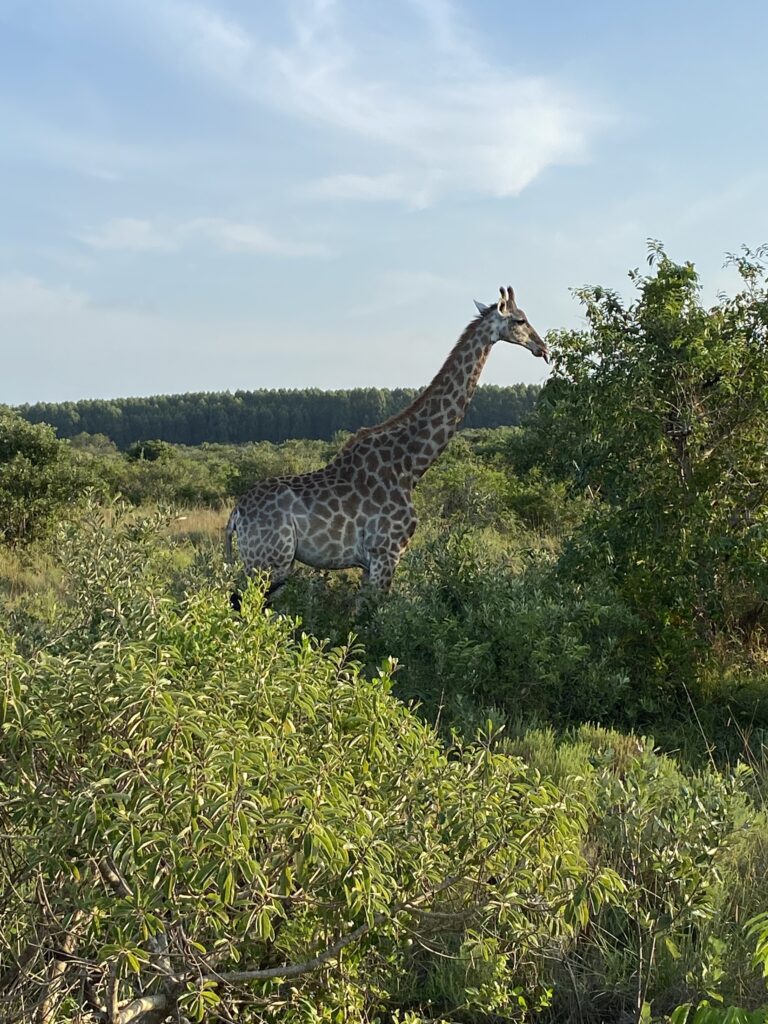
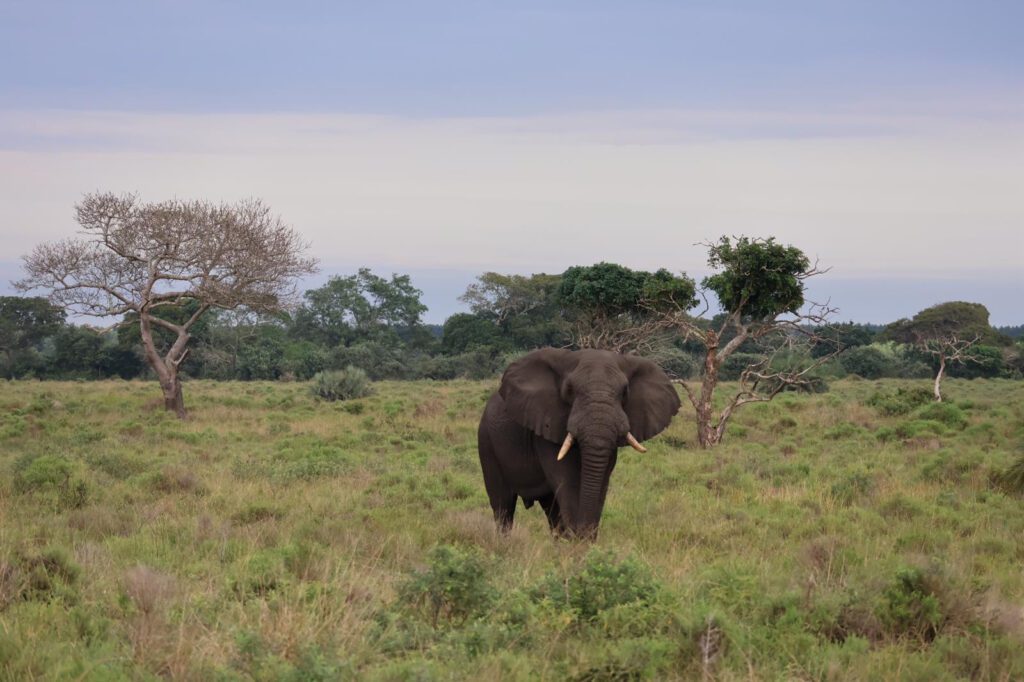
The lone bull elephant heading towards us
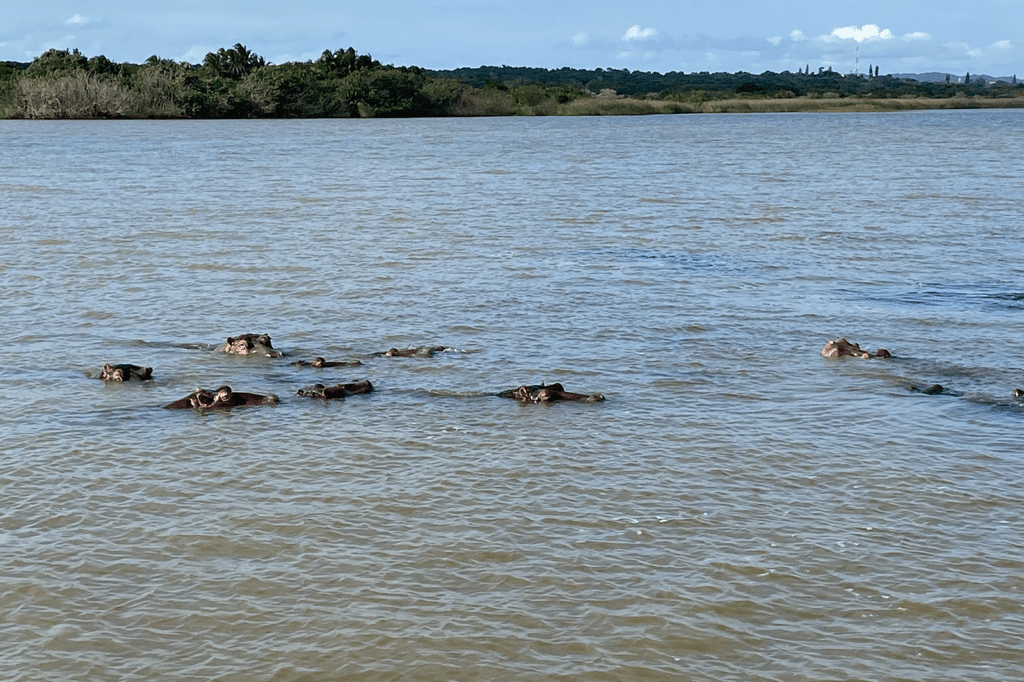
The waterways around Saint Lucia are brimming with families of hippos
The second game park we visited was Hluhluwe-Imfolozi (HIP). This is the oldest proclaimed nature reserve in Africa, consisting of 96,000 hectares and serving as the genetic origin for every single southern white rhino in the world.
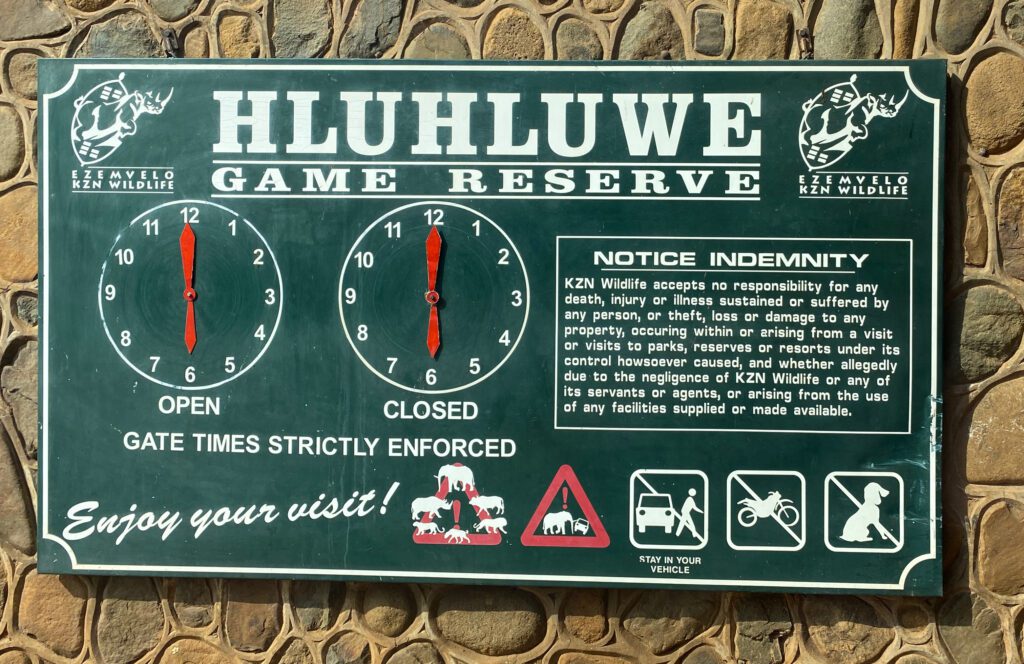 We stayed at Biyela Lodge within the mFulaWozi Wilderness Reserve, a private game reserve connected to HIP. To my amazement, we cut through HIP to get to mFulaWozi. It was mind-boggling to me that we could go on a game drive on the way to somewhere else!
We stayed at Biyela Lodge within the mFulaWozi Wilderness Reserve, a private game reserve connected to HIP. To my amazement, we cut through HIP to get to mFulaWozi. It was mind-boggling to me that we could go on a game drive on the way to somewhere else!
The terrain was hilly and green, with thick vegetation in many places, and the roads through the park were winding. Buffalo, wildebeest, impala, and other antelopes were common sights, and every so often, we would come across a white rhino or two.
HIP and mFulaWozi are home to a rich diversity of wildlife, including the ‘Big Five.’ People often refer to the ‘Big Five’ as the animals to see on a safari, but it’s important to note that they are not necessarily the five biggest animals you can encounter. The term ‘Big Five’ originated from the difficulty and danger involved in hunting these animals on foot during the colonial era. Specifically, the ‘Big Five’ refers to the African elephant, lion, leopard, cape buffalo, and white or black rhinoceros.
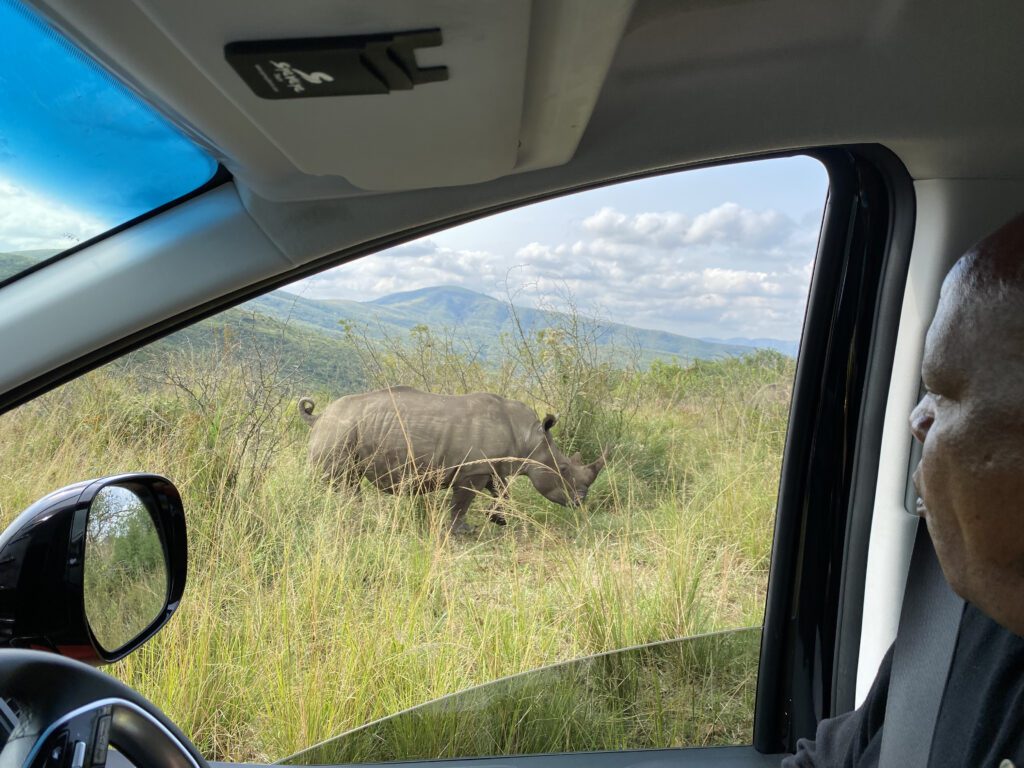
Driving through HIP we passed the odd rhino
Staying in a private reserve offers an advantage over a state reserve, as the guides can take the safari vehicles off-road, increasing our chances of spotting wildlife. However, there are no guarantees on safari.
Despite seeing plenty of evidence of their presence, we did not spot another elephant, and the closest we got to a lion or leopard were their prints in the sand.
Our guide informed us that the animals were used to seeing safari vehicles, and although they could hear people talking, they didn’t perceive the individuals within the vehicle as separate from it. However, if you put your arm out or got out of the vehicle, then you were in danger, as they would recognize you as a person. During some of the drives, it could be easy to get complacent, we would have 15 minutes of speeding through the shrubs and seeing nothing, and then we would turn a corner, and suddenly a rhino would be standing in the road or a herd of buffalo grazing nearby. It is important to always be on the lookout on safari!
I was lucky enough to be travelling with a group of travel agents who had all been on many game drives. They were kind enough to give me the plum position and made sure I got to see everything available.
Our guides were incredibly knowledgeable. Every game drive was enhanced by the details they shared and their knowledge of the wildlife. The birdlife was also amazing. We saw vultures, eagles, woodpeckers, sunbirds, guineafowl, cuckoos, and many more.

Biyela Lodge is built into the hillside, offering stunning views of the imposing plain of the White iMfolozi river which divides the mFulaWozi wilderness reserve. The river is wide and mostly shallow, and we were fortunate enough to cross it on one of our drives. However, following rains upstream, a day later, the river had risen too high to cross.
The lodge staff informed us that the plain frequently attracts an array of wildlife, with animals often venturing down to the river during the summer months to drink. Enthusiastic visitors can relish in the serene ambiance of the lodge’s terrace, enjoying their own beverage while indulging in the mesmerizing spectacle of wildlife gracefully congregating at the river’s edge.
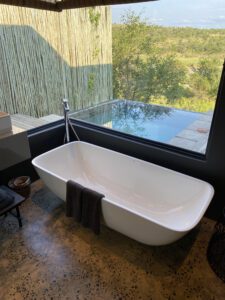 Despite being situated in the middle of a wilderness reserve, Biyela Lodge is a place of pure luxury. Every room provides a huge vista overlooking the river plain, a private deck, his and hers showers, an outdoor shower, and most rooms, a plunge pool.
Despite being situated in the middle of a wilderness reserve, Biyela Lodge is a place of pure luxury. Every room provides a huge vista overlooking the river plain, a private deck, his and hers showers, an outdoor shower, and most rooms, a plunge pool.
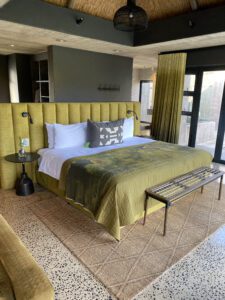
The main lodge was also very comfortable, and the food served was truly delectable and plentiful. From coffee and rusks on the early morning game drive, through to sundowners on the evening drive prior to a three course dinner back at the lodge. The quality was five star.
This trip offered the perfect blend of the outdoors, wildlife, luxury, and amazing food. It fulfilled everything I had hoped for in a truly unique experience (except two of the big five!) South Africa has moved from my bucket list to the list of countries to revisit, and hopefully, I’ll have the opportunity to return again and again!



